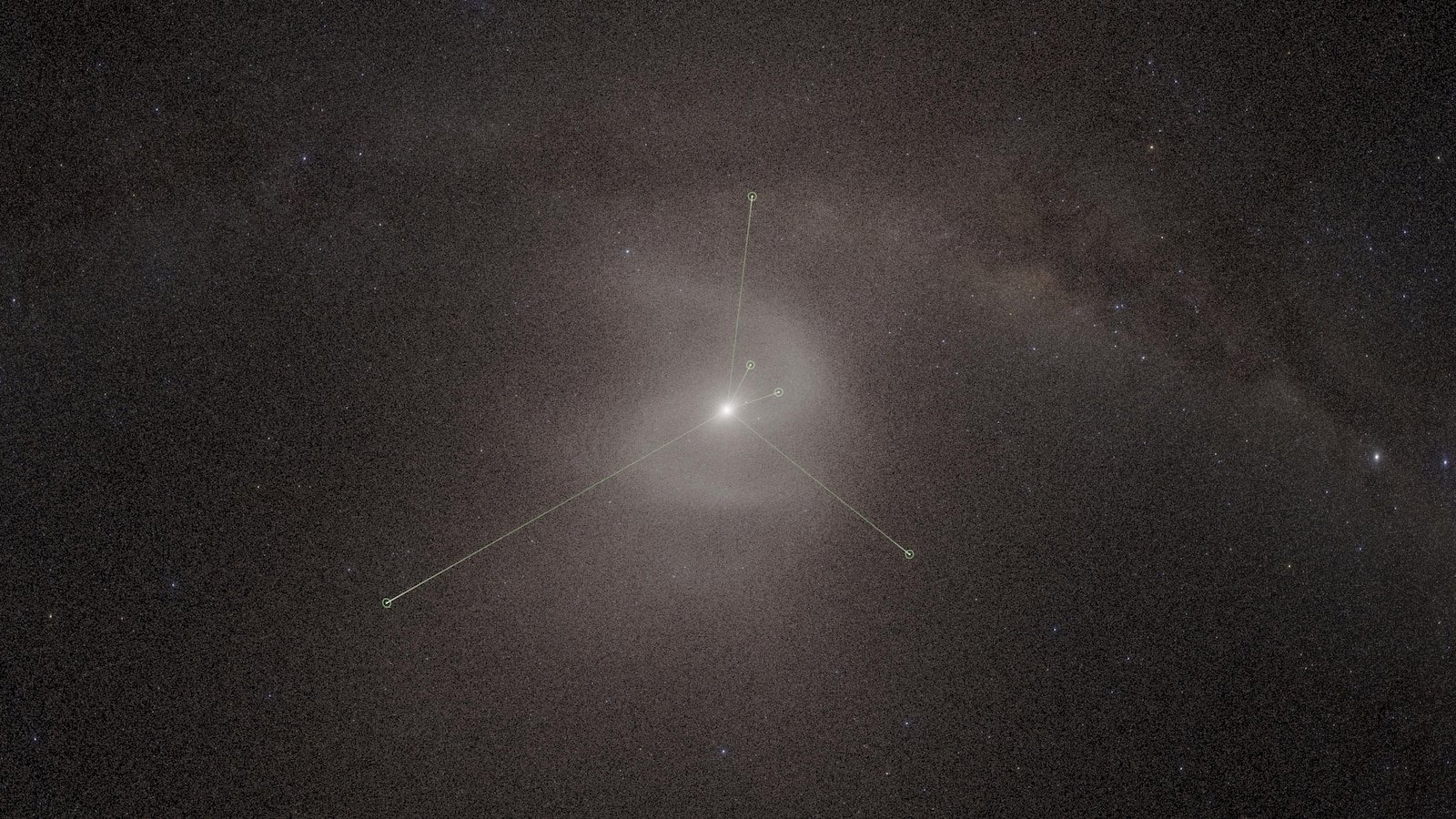New York – Scientists have unlocked one of the The many secrets of the Solar System Of an unexpected source: a planetarium show that opens to the public on Monday.
To the American Museum of Natural History The past fall, the experts were working hard to prepare “meetings on the Milky Way”, a deep immersion in our local galaxy with the form of stars movements and other heavenly objects.
They were refining a scene with what is known as the Oort cloudA region far beyond Pluto full of icy relics of the formation of the solar system. Comets can rush To Earth from the cloud, but scientists have never glimpsed their true form.
One night, while looking at Oort Cloud, scientists noticed something strange projected in the planetarium dome.
“Why is there a spiral there?” Jackie Faherty said, an astrophysics that directs the museum’s educational programs and helped elaborate the planetarium show.
The internal section of the Oort cloud, made of billions of comets, resembled a bar with two agitated arms, similar to the shape of our Milky Way Galaxy.
The scientists had long thought that Oort’s cloud was formed as a sphere or a flattened shell, deformed by the thrust and pull of other planets and the Milky Way itself. The planetarium show hinted that a more complex form could be inside.
The museum contacted the researcher who provided the data of the Oort cloud for the program, who was also surprised to see the spiral.
“It’s a strange accident that really happened,” said David Nesvorny of the Southwest Research Institute.
Upon realizing that they had encountered something new, the researchers Posted your findings Earlier this year at the Astrophysical Journal.
The spiral is “a surprising change in our understanding of the external solar system,” the planetary scientist Andre Izidoro of the University of Rice said in an email, who did not participate in the study.
The discovery, trusting data on how celestial objects move and the use of simulations, will be difficult to confirm with the observations. But knowing more about the orbits of distant comets could give scientists some clues, Izidoro said.
While gathering the planetarium show, museum’s experts did not expect a window to the internal functioning of the universe. The show, narrated by the actor Pedro Pascal, presents many vivid scenes that can capture the public more than the orort cloud, said Jon Parker of the museum, including a continuous fusion of the Mini Galaxy of Sagittarius with the Milky Way.
No matter how surprising and beautiful the images of the show, the museum promised to make it scientifically precise. That is what created the perfect conditions to trip with something new, said the Museum Emmart carter.
“You never know what you are going to find,” Emmart said.
___
The Department of Health and Sciences of Associated Press receives support from the Science and Educational Media Group of the Howard Hughes Medical Institute and the Robert Wood Johnson Foundation. The AP is solely responsible for all content.





